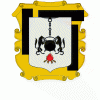Azpeitia
 |
 |
Azpeitia is the birthplace of Ignatius of Loyola. The house of his birth is now preserved as a part of large Jesuit compound, the Sanctuary of Loyola, a major attraction of tourists and pilgrims alike. It is also the birthplace of Renaissance composer Juan de Anchieta.
Azpeitia lies at the foot of the massive Izarraitz towering over the town and much visited by the townspeople. The Basque Railway Museum is located in the town.
Azpeitia was incorporated in 1310 by a royal decree of King Fernando IV. Its original name was “Garmendia de Iraurgi” and a year later it was renamed “Salvatierra de Iraurgi”. The name “Azpeitia” is first found in 1397. During the 13th and 14th centuries there were many battles and wars among prominent families in the town, especially between the Oñatz and Gamboa families. In 1766, there was revolt in the town against King Carlos V's policy of liberalizing the selling and buying of wheat and a rebellious town council was briefly established. However, the revolt was quickly suppressed by troops sent from San Sebastian.
The steel and wood industries have historically been the main industries in Azpeitia. The Sanctuary of Loyola is its major local tourist attraction, together with the Basque Railway Museum.
Map - Azpeitia
Map
Country - Spain
 |
 |
| Flag of Spain | |
Anatomically modern humans first arrived in the Iberian Peninsula around 42,000 years ago. The ancient Iberian and Celtic tribes, along with other pre-Roman peoples, dwelled the territory maintaining contacts with foreign Mediterranean cultures. The Roman conquest and colonization of the peninsula (Hispania) ensued, bringing the Romanization of the population. Receding of Western Roman imperial authority ushered in the migration of different non-Roman peoples from Central and Northern Europe with the Visigoths as the dominant power in the peninsula by the fifth century. In the early eighth century, most of the peninsula was conquered by the Umayyad Caliphate, and during early Islamic rule, Al-Andalus became a dominant peninsular power centered in Córdoba. Several Christian kingdoms emerged in Northern Iberia, chief among them León, Castile, Aragon, Portugal, and Navarre made an intermittent southward military expansion, known as Reconquista, repelling the Islamic rule in Iberia, which culminated with the Christian seizure of the Emirate of Granada in 1492. Jews and Muslims were forced to choose between conversion to Catholicism or expulsion, and eventually the converts were expelled through different royal decrees.
Currency / Language
| ISO | Currency | Symbol | Significant figures |
|---|---|---|---|
| EUR | Euro | € | 2 |
| ISO | Language |
|---|---|
| EU | Basque language |
| CA | Catalan language |
| GL | Galician language |
| OC | Occitan language |
| ES | Spanish language |















